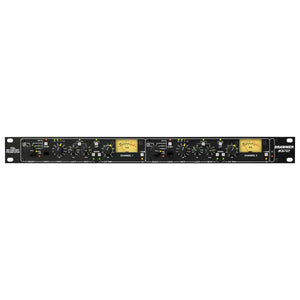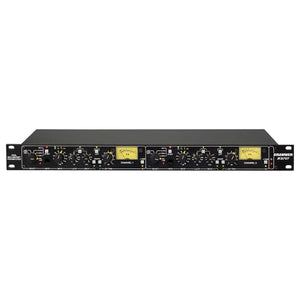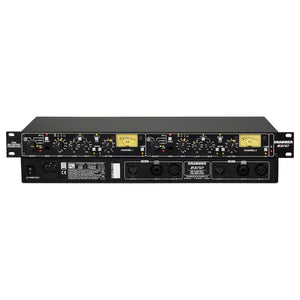Your Cart is Empty



$1,729.00$1,875.00
DRA-1972
Drawmer 1972 Dual Mic, Line & Instrument Preamplifier
1972 uses the latest THAT Corporation technology in the two independent mic preamps to provide ultra-clean, transparent and precise recordings, that can be processed at a later stage using your favourite methods, be it compression, E.Q., saturation, valve, transformer or tape. Each channel is capable of 66dB of stepped gain, with an additional +/-12dB’s trim at the output, and incorporates switchable mic impedance for accurate mic matching to bring out the best from any microphone used, and also provides a way to “sculpt” the sound of passive dynamic, and especially low-impedance ribbon microphones.
Features:
- Two THAT Corporation ultra clean mic pres with 66dB of gain in 6dB steps, plus +/-12dB’s trim at the output.
- Separate Line & Mic input XLRs on the rear plus a pro-quality instrument DI input on the front panel.
- Can be used on a multitude of sources including instruments and all types of microphones in the studio from low to high end, plus ribbon mics.
- Switchable Mic Impedance for accurate mic matching and also mic tone sculpting.
- A wealth of features not found on other preamps make it easy to capture difficult-to-record sources.
- Unique Lift feature for boosting very low signals without the loud signals clipping.
- Fully variable LoCut and HiCut filters to tune into signals and remove unwanted sounds.
- Shape switches are included to control bass and treble using a subtle tilt EQ.
- Phantom Power and Phase Reverse.
- Two backlit Analogue V.U. Meters with Switchable +10dB Rescale Mode.
- Time delay relays on outputs for clean power up/down.
- Internal Low Hum Toroidal Linear Power Supply with Voltage Selector Switch.
- Classic Drawmer builds quality with a rugged steel chassis and aluminium front panel.
- Designed and Handmade by Drawmer in the United Kingdom.
Capture Difficult Sources
As well as standard features that you will find on most preamplifiers, such as phase reverse, 1972 also has a wealth of tools that help when recording difficult sources, making it possible to get the best quality recording with ease:
Fully variable LoCut and HiCut controls have been included to allow you to tune into recordings and remove superfluous signals in the low and high frequencies, removing rumble and hiss with ease. In addition, the Shape feature allows you to bring out the bass or treble using a subtle tilt EQ.
Record Very Low Signals with Ease
A unique feature that has been developed by Ivor Drawmer and is currently only available in 1972 is the Lift control. Lift is essentially a low-level dynamic gain module that has no effect on signals above 0dB. This makes it possible to record very quiet signals in a transparent and natural way without distortion and clipping taking place on the louder passages, and is especially effective for very dynamic signals, finding great use in recording piano, and on all vocals, including speech, and for capturing ambiance
Be Creative using Variable Mic Impedance
You may have encountered the general rule that the impedance of the preamp input should be 10X that of the mic to get an input impedance that is appropriate for the mic and to avoid loading the source, however, it is less known that mismatching can create some interesting tonal differences that can be used more creatively. The 1972 has 3 settings per mic input: 200, 600 and 2400 Ohms, making it easy for you to explore the various tones. The result will depend on the microphone used, as the tonal changes will be obvious with some mic’s but others will hardly alter, and on the material you're working with.
Type: Microphone Preamps



